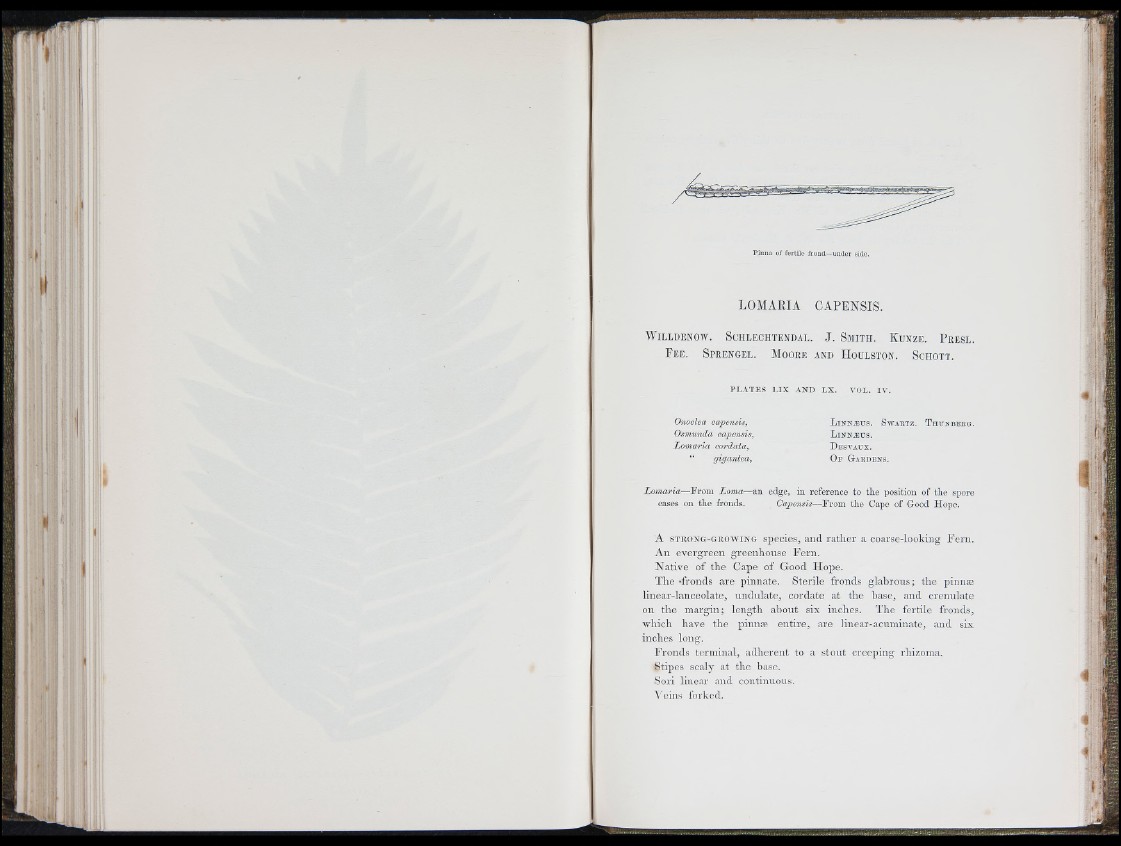
Pinna of fertile fronti—under side.
LOMARIA CAPENSIS.
W i l l d e n o w . S c h l e c h t e n d a l . J. S m i t h . K u n z e . P r e s l .
F e e . S p r e n g e l . M o o r e a n d H o u l s t o n . S c h o t t .
PLATE.S LIX AND LX. VOL. IV.
Onoclea capensis,
Osmunda capensis,
L om a ria cordata,
“ gigantea.
L in k æ u s . S w a e t z . T h u n b e r g .
L in n æ u s .
D e s v a u x .
O f G-a r d e n s .
Mi
L om a r ia—F rom L oma—an edge, in reference to th e position of th e spore
cases on th e fronds, Capensis—F rom th e Cape of Good Hope.
A STRONG-GiiowiNG speoies, and ra th e r a coarse-looking F e rn .
A n evergreen greenhouse F e rn .
N a tiv e of the Cape of Good Hope.
T h e -fronds are pinnate. Sterile fronds glabrous; the pinnæ
linear-lanceolate, und u la te , cordate at the base, and crenulate
on the margin; length about six inches. The fertile fronds,
which have the pinnæ en tire , are linear-acuminate, and six
inches long.
F ro n d s termina l, adhe ren t to a sto u t creeping rhizoma.
Stipes scaly at the base.
Sori linear and continuous.
\ oin.s forked.